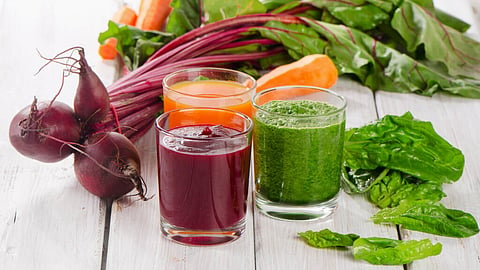
- Home
- EventsEvents
- Product Launches
- CategoriesCategories
- Advertise
- Opinion

Food engages the senses of smell, taste, touch, and vision. Consumers prefer foods that fare well on all these parameters. The first selection of food happens based on how it looks, and only then does taste get a chance to present itself. Hence it, not a surprise when research shows that colors strongly influence consumer preferences. About 85% of consumers place color as a primary reason for purchasing a product. However, most food loses its color during preparation or storage, and consumers find such food unappealing. Due to this demand for visually appealing foods, there is a wide range of food colorants in the market.
Food colorants are ingredients added to the food formulation to give it a desirable color. They are the single most important components for food products to be picked up off shelves and hence an ingredient that food producers pay utmost attention to. Based on the source of ingredients, food colorants are classified as synthetic and natural colors. As the name suggests, synthetic colors are chemical formulations, while natural colors are sourced from plants, fruits, vegetables, and minerals. The Indian food colorant market is projected at a CAGR of 5.3% over the forecasted period of 2020 – 2025.
Growing consumer demand for natural and clean label products
Traditionally synthetic food colors are of low cost and have out-sold the natural counterparts, but the 'go natural' trend shapes the new market. FMI's market analysis shows that 4 out 10 consumers are now looking for naturally sourced food ingredients, and this trend is further on the rise. Understanding this shift, food producers are constantly looking out for natural replacements for ingredients used in large-scale food production of high-demand consumer foods.
Further, there has been a steady increase in demand for clean label ingredients. Rising health consciousness and growing inclination towards environment-friendly products have been the driving factors for this range. The positive impact of such products has brought in a willingness among consumers to pay more. Last year, the Asia Pacific clean label market registered an increase of 7.4%, making it the fastest-growing clean label market globally.
Food colors have come a full circle
Most of the food colorants used before industrialization were naturally sourced. With the increase in mass production of food products, the usage of synthetic colors also increased. The first synthetic color was discovered in 1856, and by the 1900s, synthetic colors were most widely used as they were cheap and easily available. In addition to cost, they also offered ease of usage, making them a preferable choice for the industrialists.
The regulatory frameworks on the usage of colors emerged by 1960. Some synthetic colors are produced by using chemicals with heavy metals such as arsenic and lead, which can cause life-threatening diseases. There have been some instances where certain artificial colors such as yellow 5, yellow 6, and red 40 were found to contain carcinogens. The scientific evidence for the side effects caused by artificial colors was discovered in the 1990s. This awareness has spread among the consumers, and they now specifically seek out naturally sourced and clean label ingredients, thus leading the industry back to where it began.
A solution to the natural dilemma
Symega's NatureHue is a range of fruit and vegetable juice concentrates specifically designed to impart colors to various food products. Developed through intense research and supported by state-of-the-art technology, they impart the desired hue to your foods while maintaining the source's real goodness.
Available in six vibrant shades, NatureHue offers the desired functionality to an innovative creator, clean-label benefits to a responsible marketer, and assurance to a sensitive consumer.
Source - Symega
